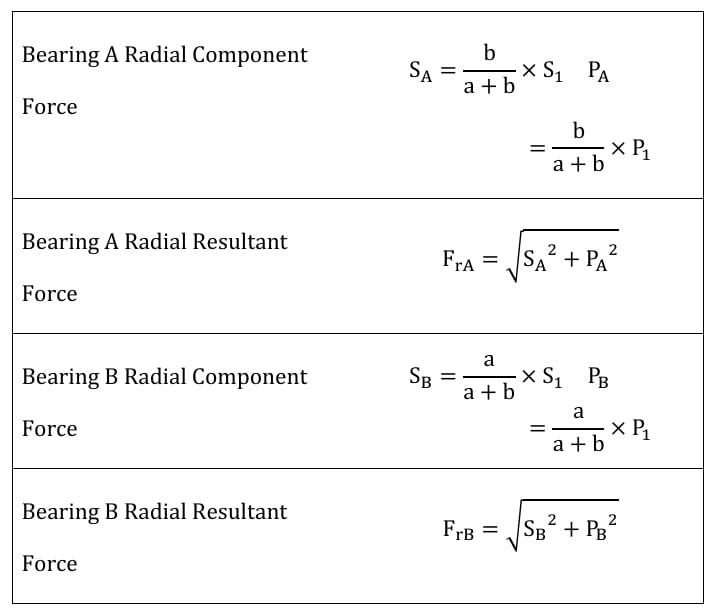Calculating Bearing Load for Gear Mesh Transmission Equipment
Transmission methods for equipment include mechanical, hydraulic, electric, and magnetic. Mechanical transmission is further divided into friction transmission (using belts, chains, etc.), mechanical transmission (couplings, universal joints, etc.) and gear mesh transmission (using gears).
Gear transmission is very common. To determine the bearing's rated service life and select the appropriate size and model of rolling bearings, it is crucial to consider the forces at the gear mesh point and the load transferred to the bearings.
Gear Types
- Spur Gears: Spur gears are the simplest type, with teeth parallel to the gear shaft axis.
- Helical Gears: The teeth of helical gears are not parallel to the axis, which creates axial forces. These bearings can absorb these forces are required.
- Herringbone Gears: Herringbone gears are composed of two helical gears with opposite orientations, canceling out the axial forces.
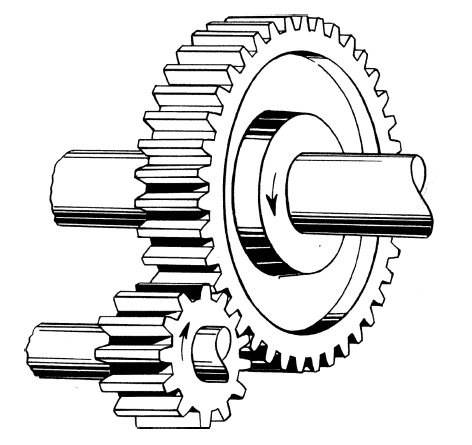 |
 |
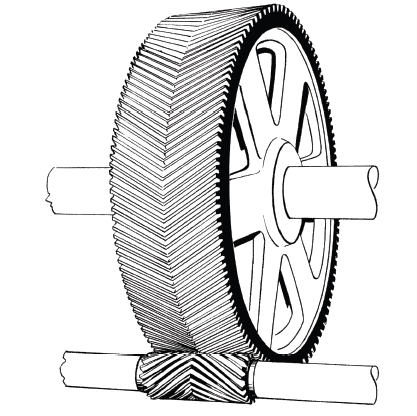 |
Fig 1 Spur gears, helical gears and herringbone gears
- Bevel Gears: Bevel gears transmit power between two intersecting axes, often at a right angle. There are two types: straight bevel gears and spiral bevel gears.
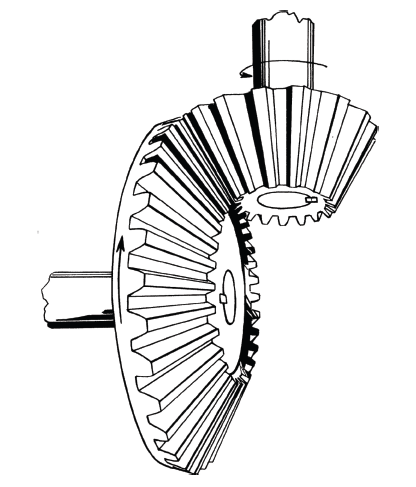 |
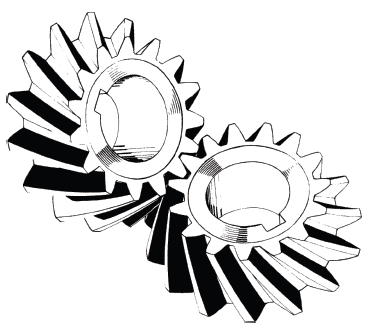 |
Fig 2 Straight and Spiral Bevel Gears
- Hypoid Gears: Transfer motion between two non-parallel and non-intersecting axes.
- Worm Gears: Worm gears are used to transmit power and motion between two perpendicular axes.
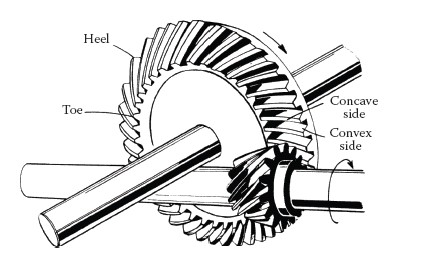 |
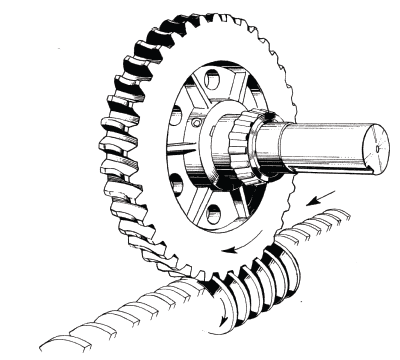 |
Fig 3 Hypoid gears and worm gears
Basic Gear Parameters
- Pressure Angle (α): The acute angle between the direction of the force exerted by the tooth profile at a point of contact and the velocity direction at that point.
- Normal Pressure Angle (an): The angle between the normal line at the tooth surface and the tangent to the base circle of the gear.
- Pitch Circle Diameter (d): The diameter of the pitch circle, which is the imaginary circle where two gears effectively mesh and engage.
- Helix Angle (β): The angle between the gear tooth line and the gear axis, also known as the tooth line helix angle.
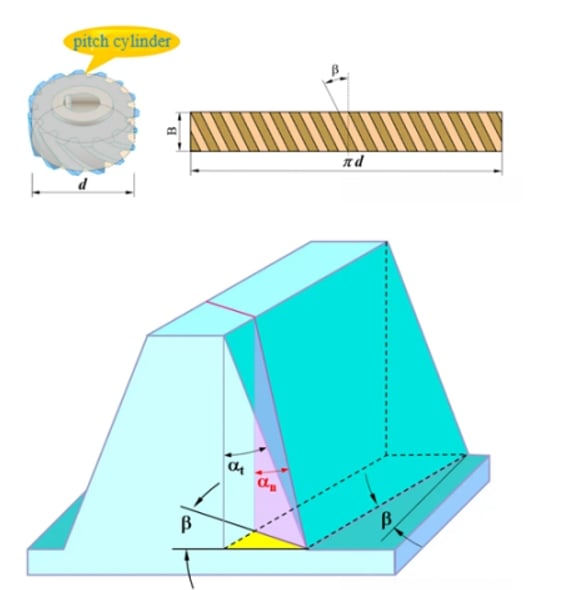
Load Calculation at Gear Mesh Points
Spur Gear Calculation
Spur gear mesh transmission has no axial force.
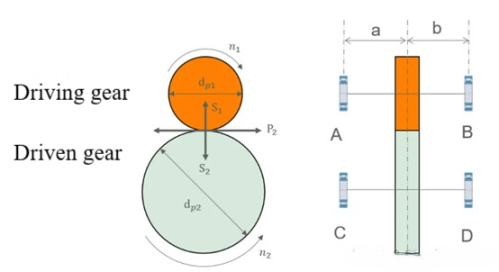
Force Analysis and Calculation at Spur Gear Mesh Points:

Radial Force Analysis on Bearings on Both Sides of the Gear Shaft:
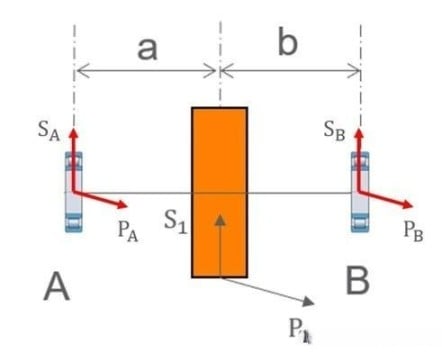
Helical Gear Calculation
1. Helical gear mesh transmission has axial force.
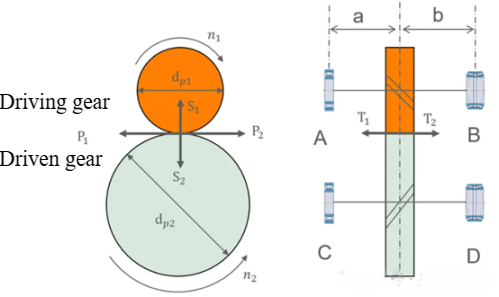
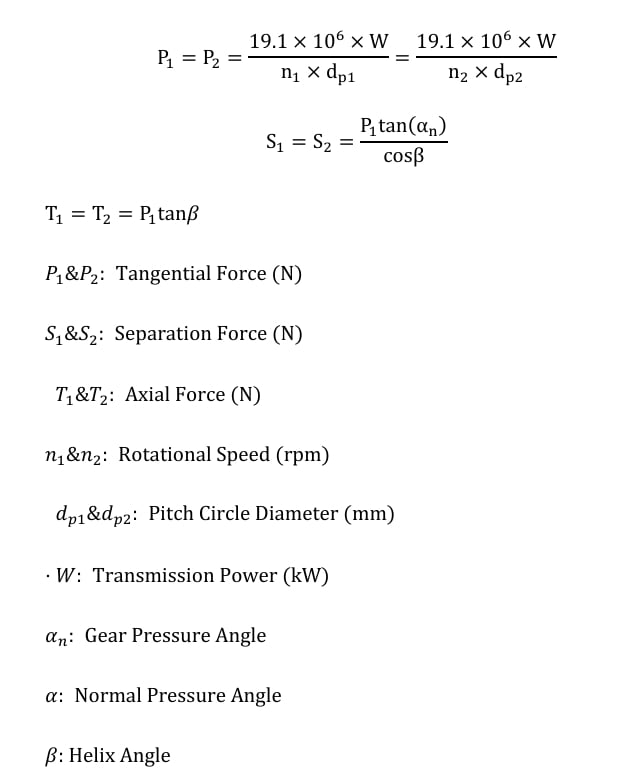
2. Force Analysis and Calculation at Helical Gear Mesh Points:
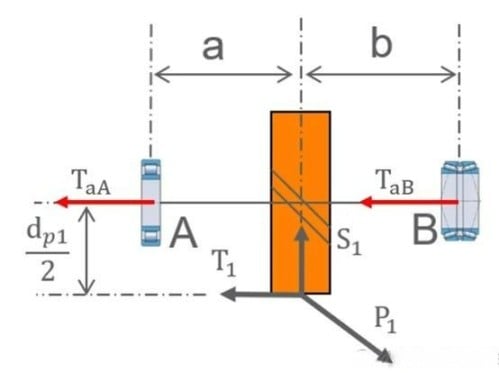
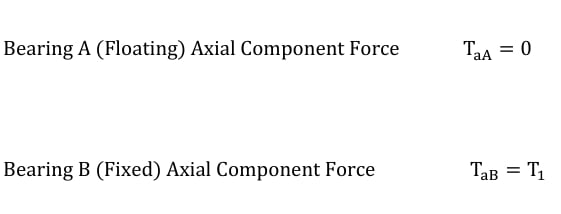
3. Radial Force Analysis on Bearings on Both Sides of the Gear Shaft:

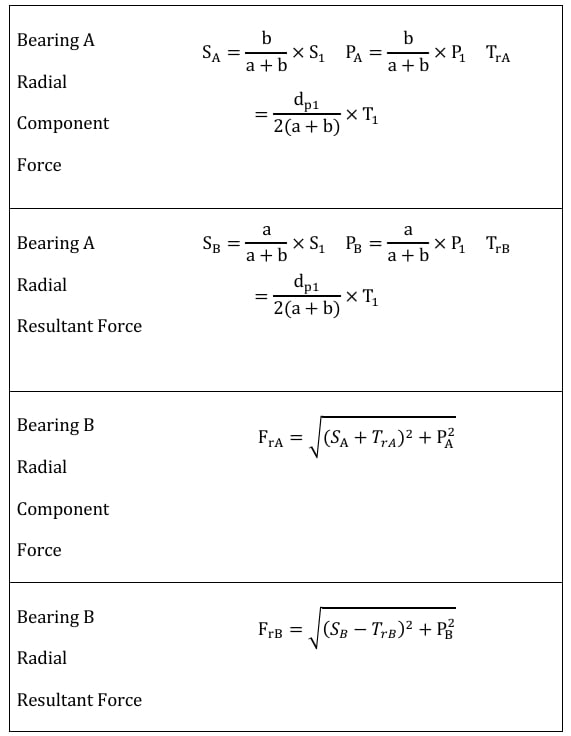
Herringbone Gear
The axial forces generated by the gear teeth cancel each other out.
1. Force Analysis and Calculation at Herringbone Gear Mesh Points: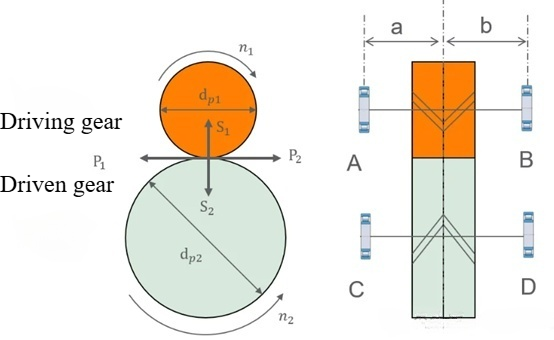
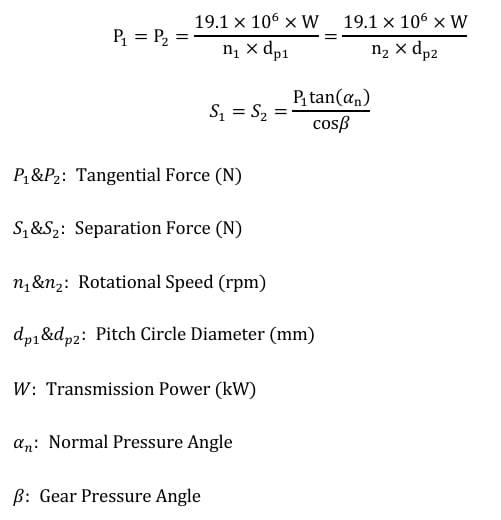
2. Radial Force Analysis on Bearings on Both Sides of the Gear Shaft:
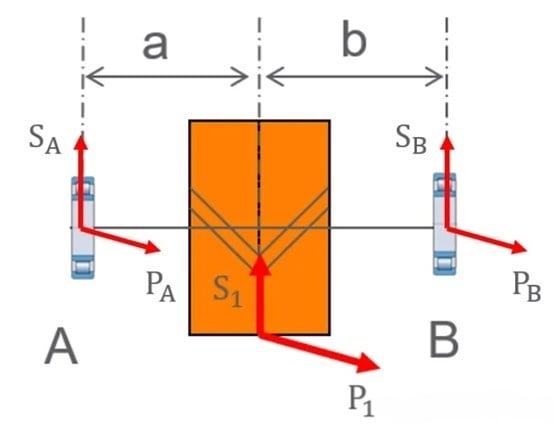
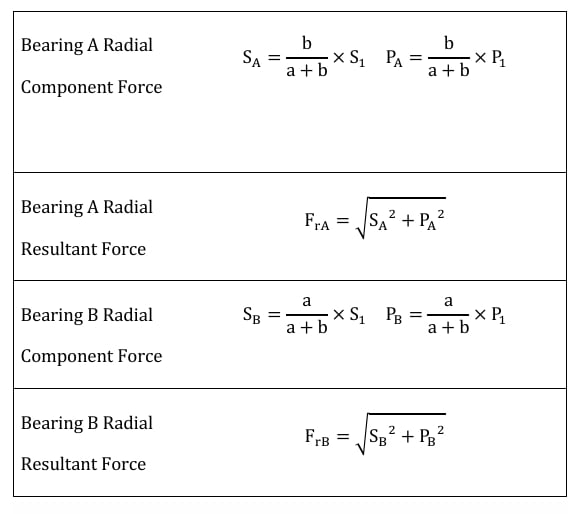
Note: The above bearing force analysis only considers forces from gear meshing. Even in systems without axial force, it is necessary to design locating and floating ends. The use of cylindrical roller bearings at both ends of the gear shaft is shown for ease of understanding the theoretical absence of axial force in gear mesh transmission.
Keep Learning



